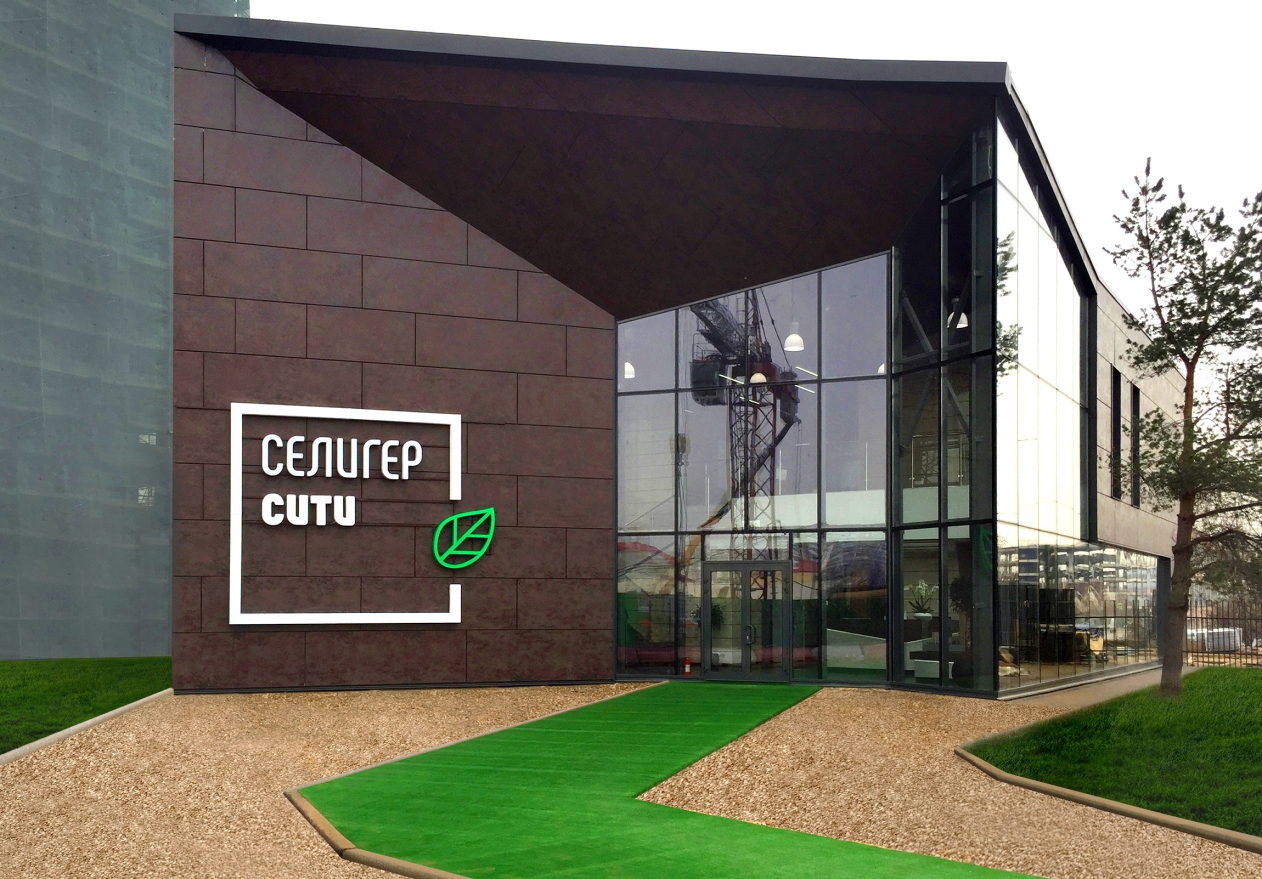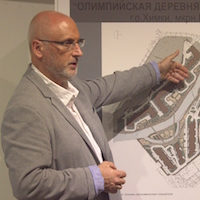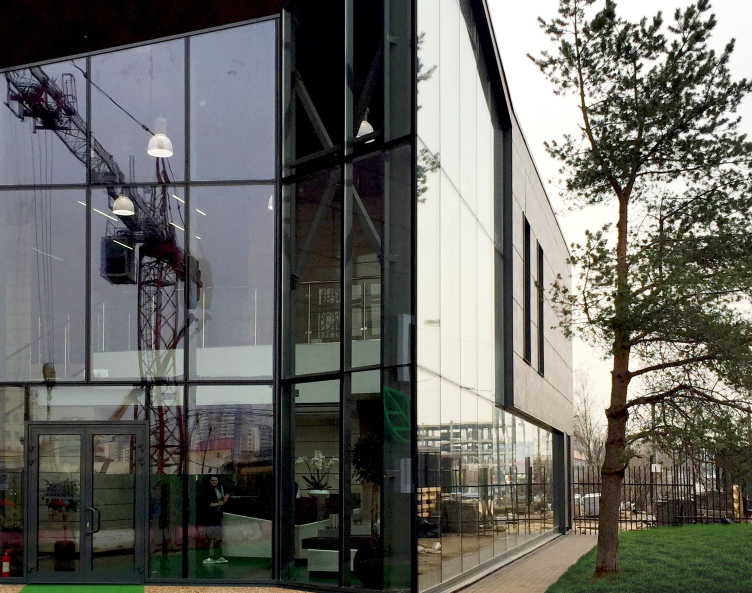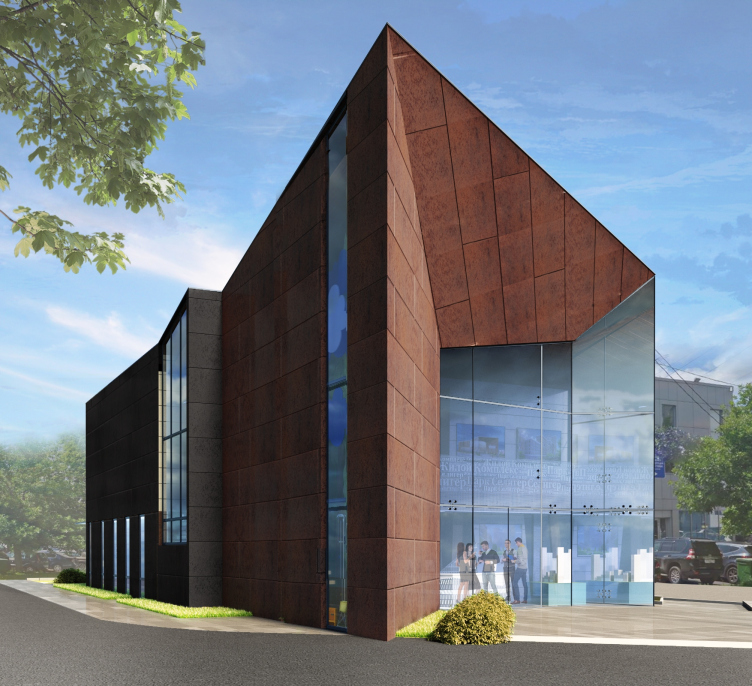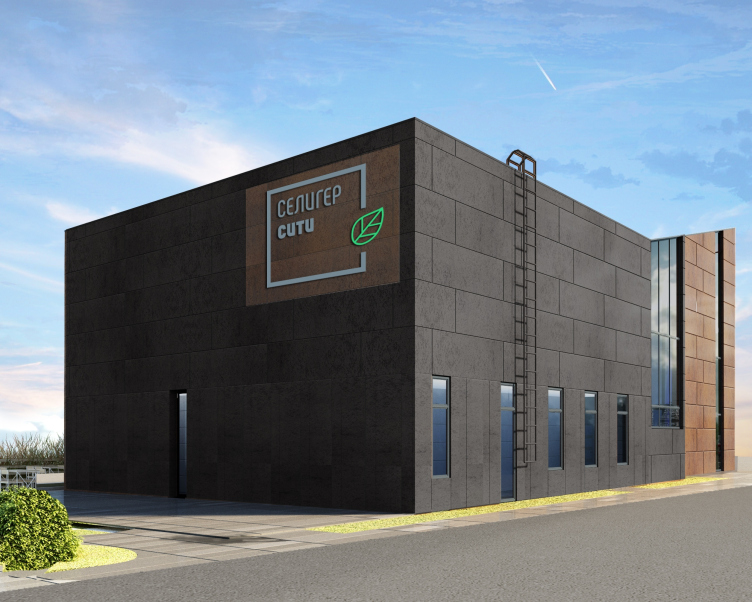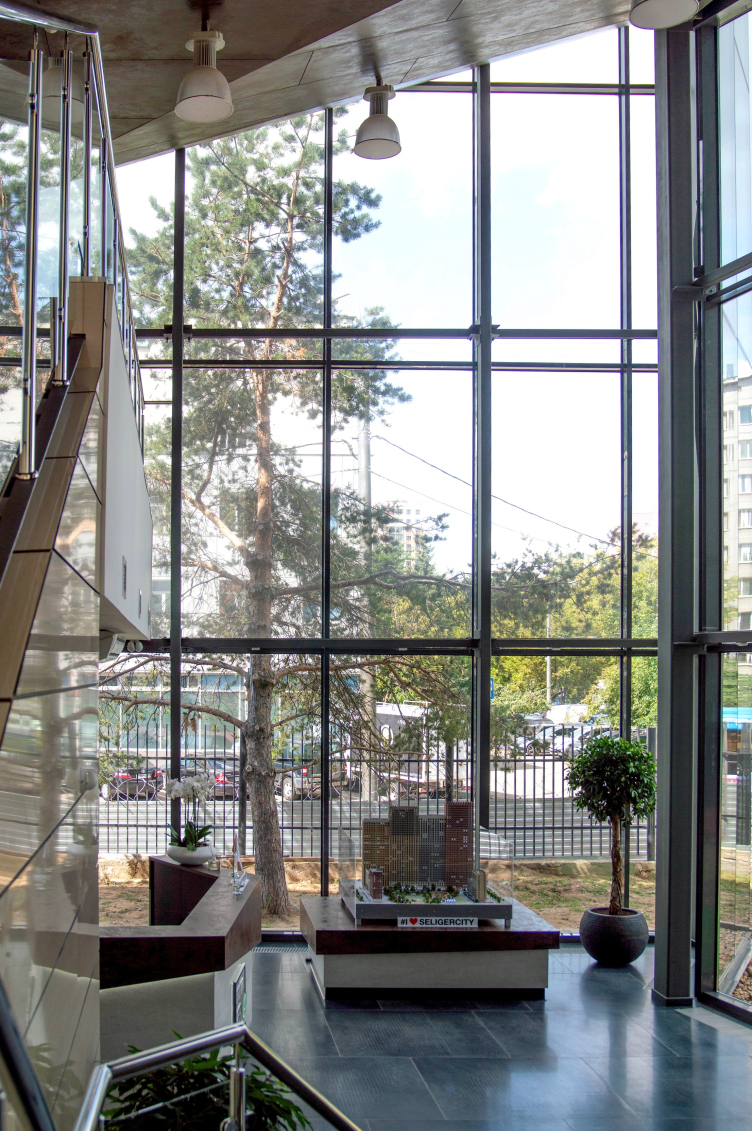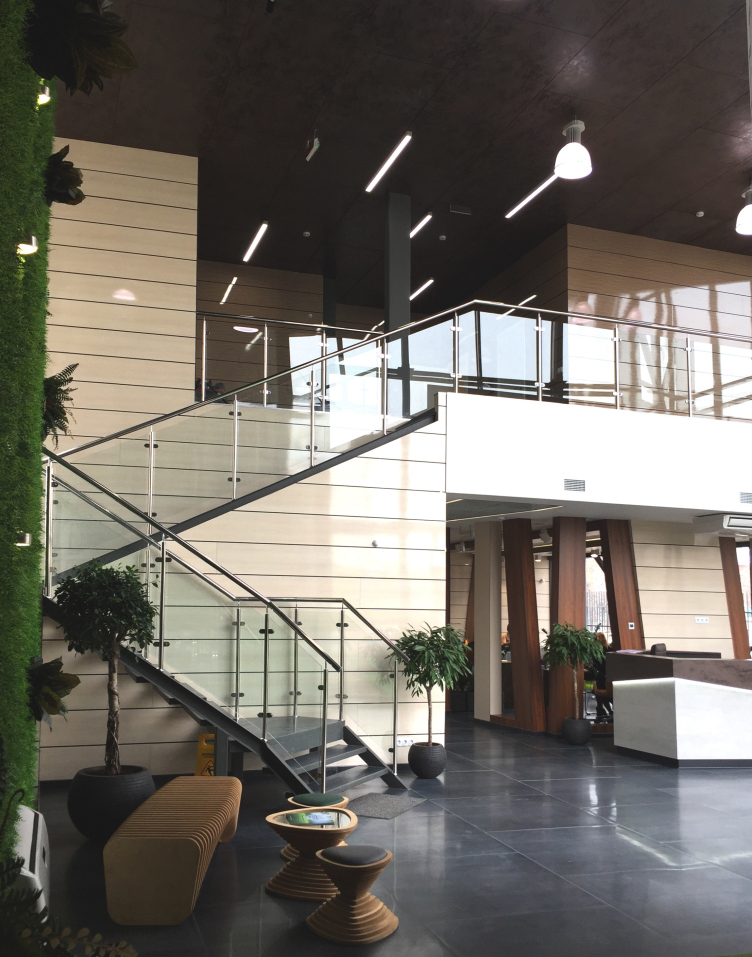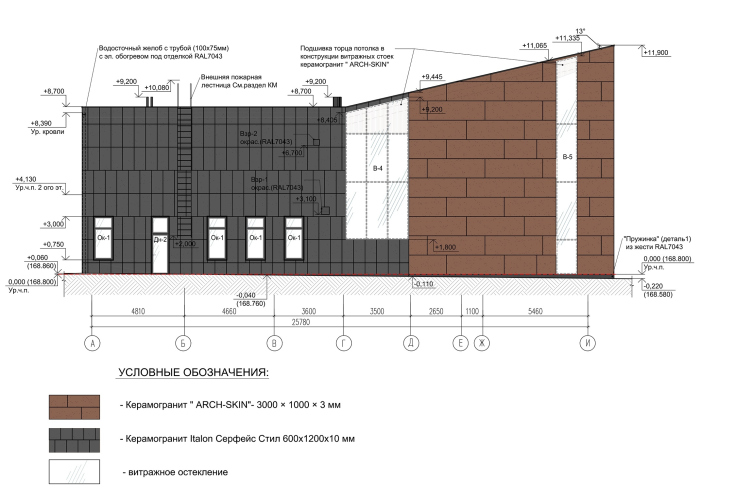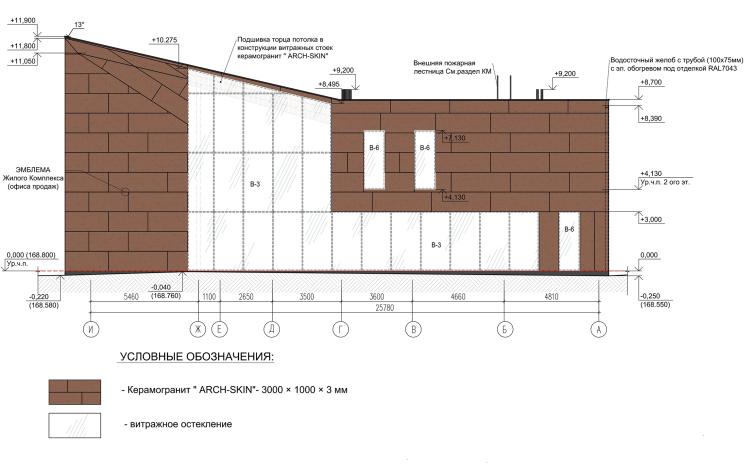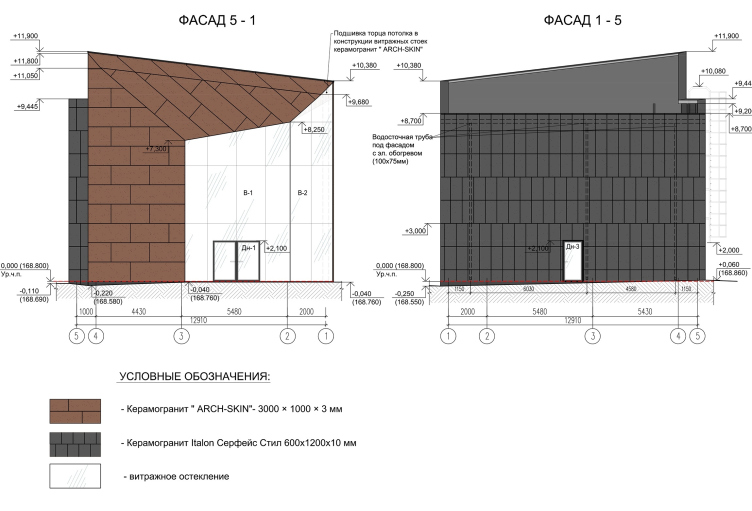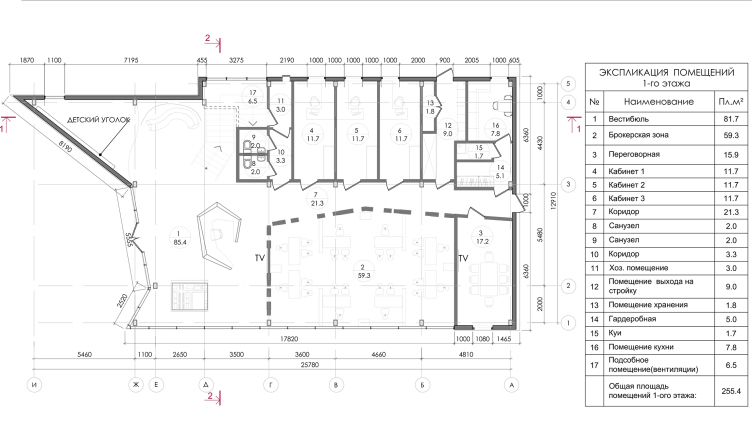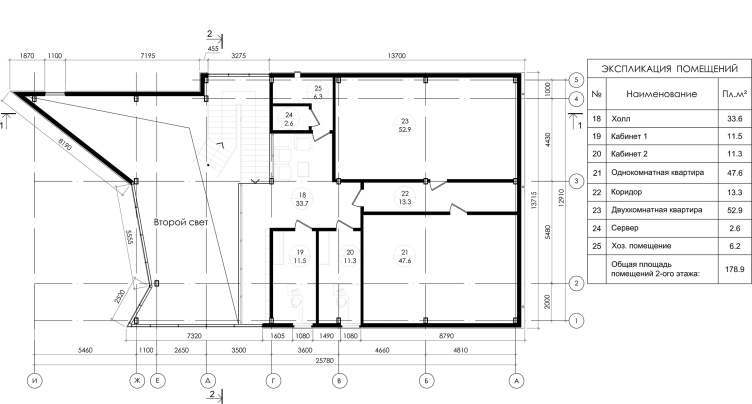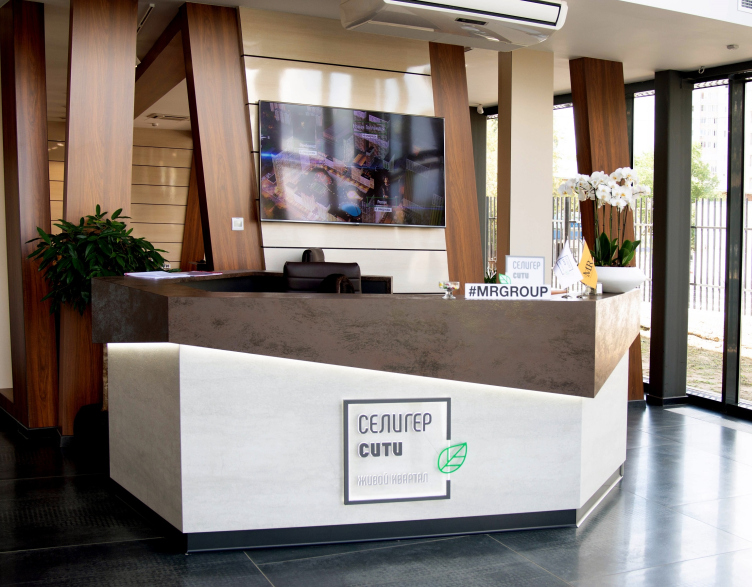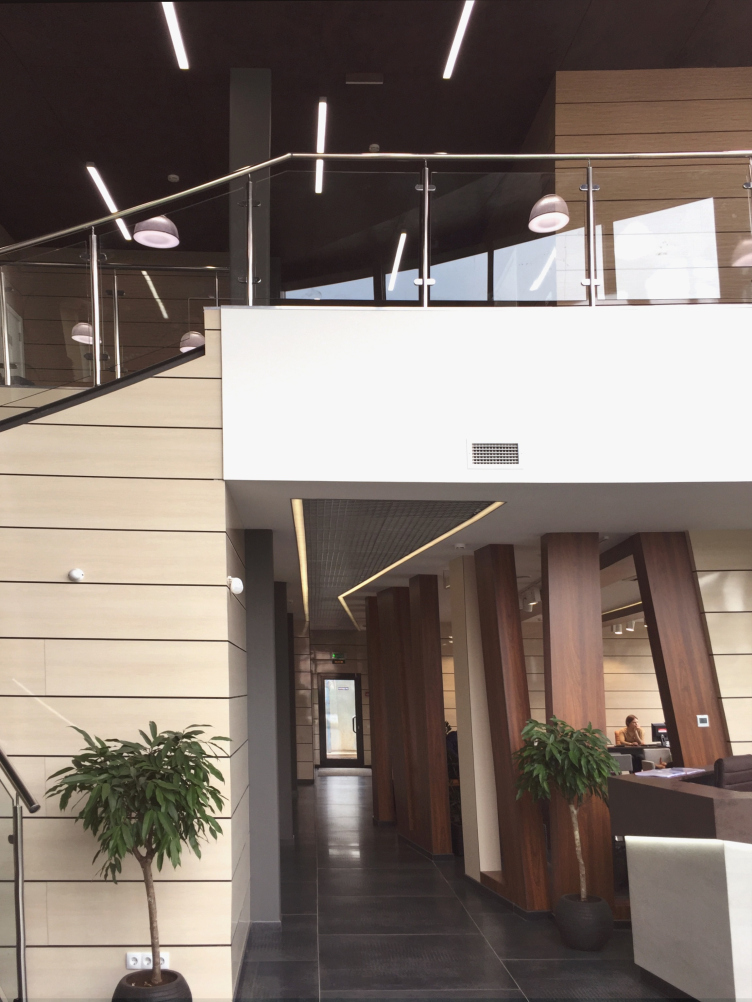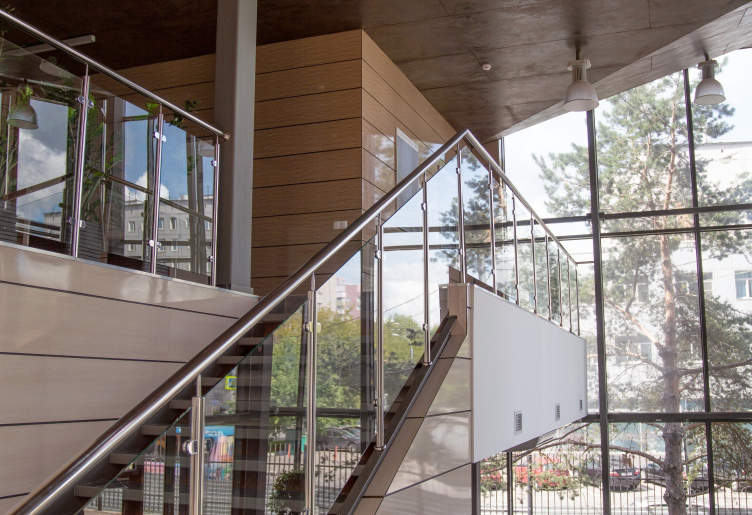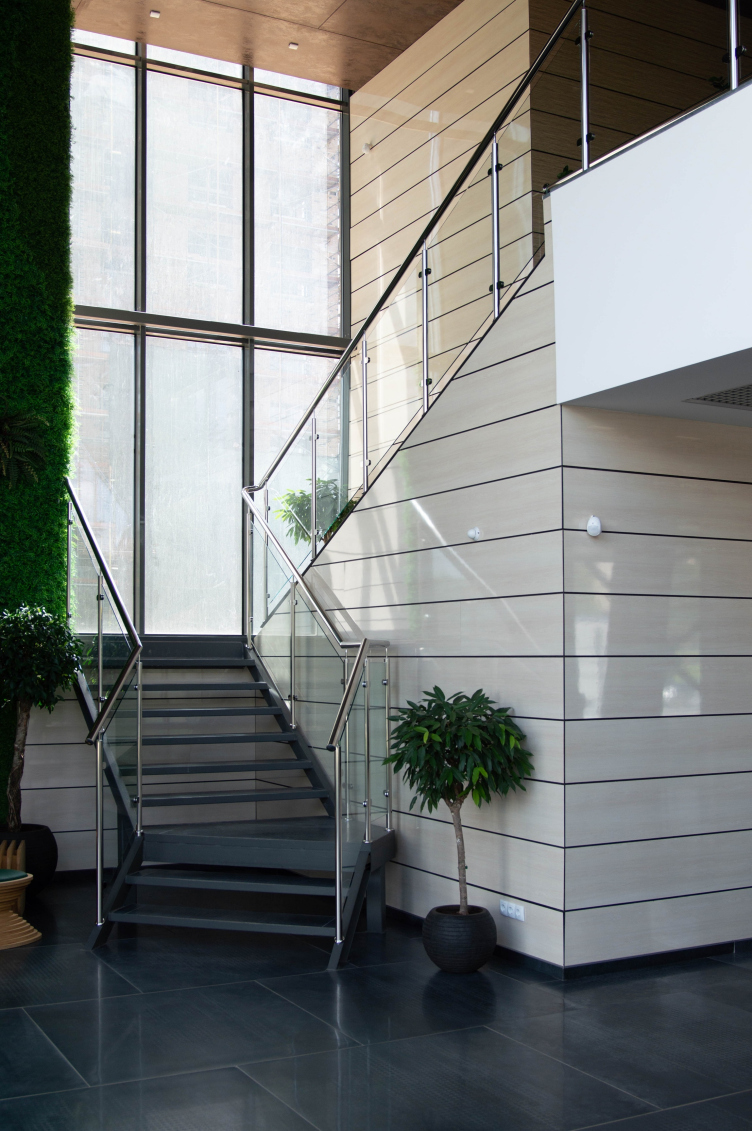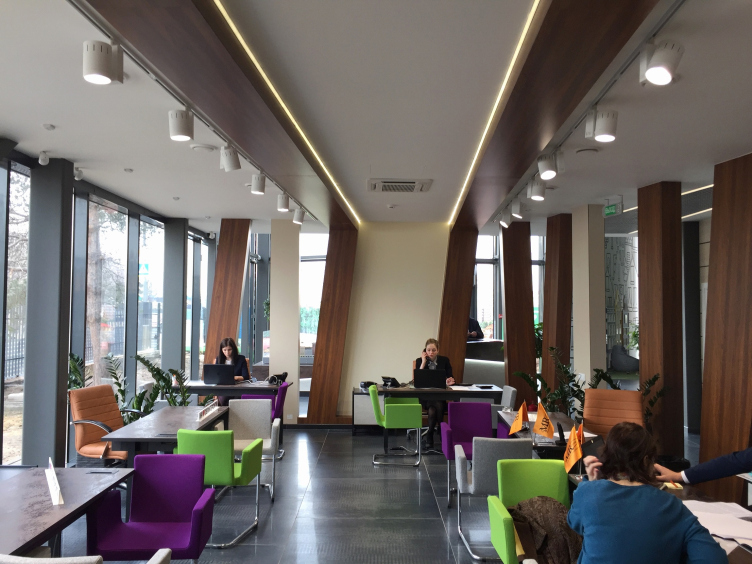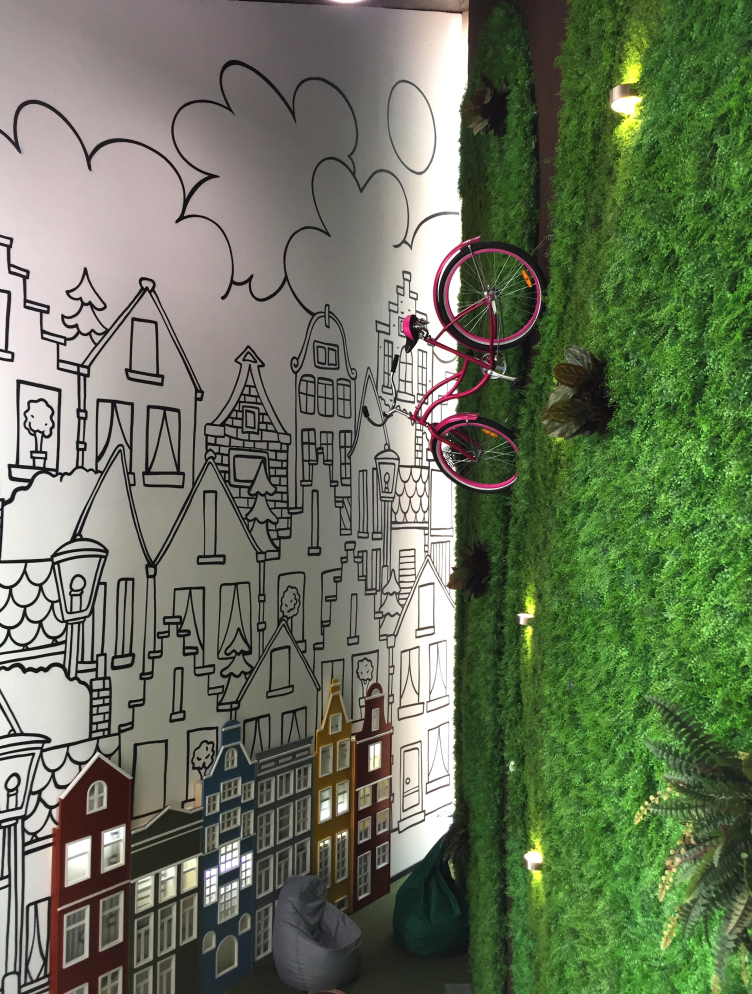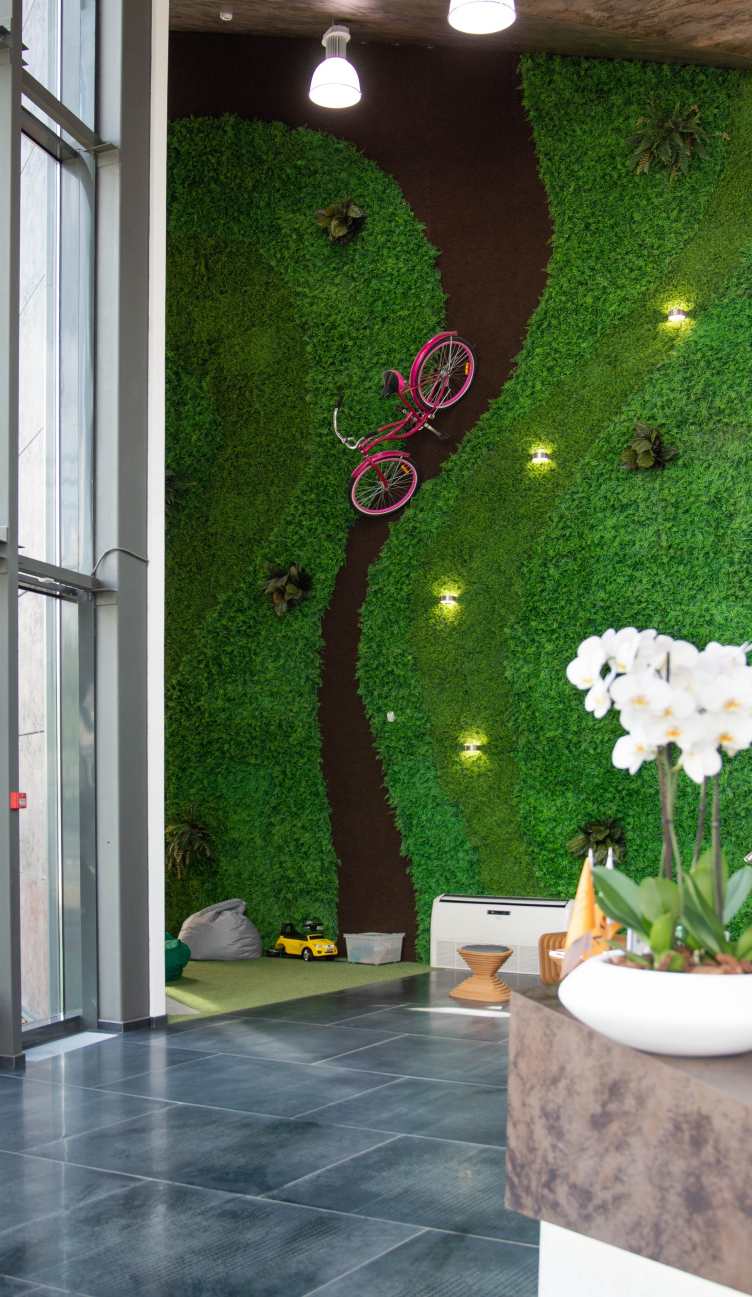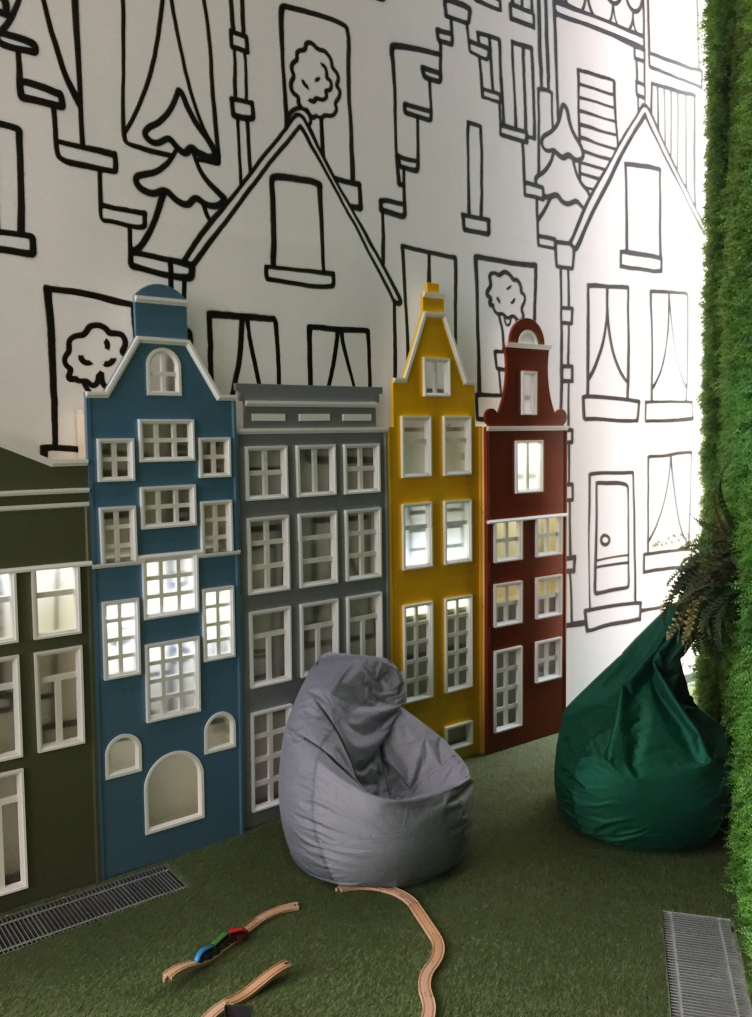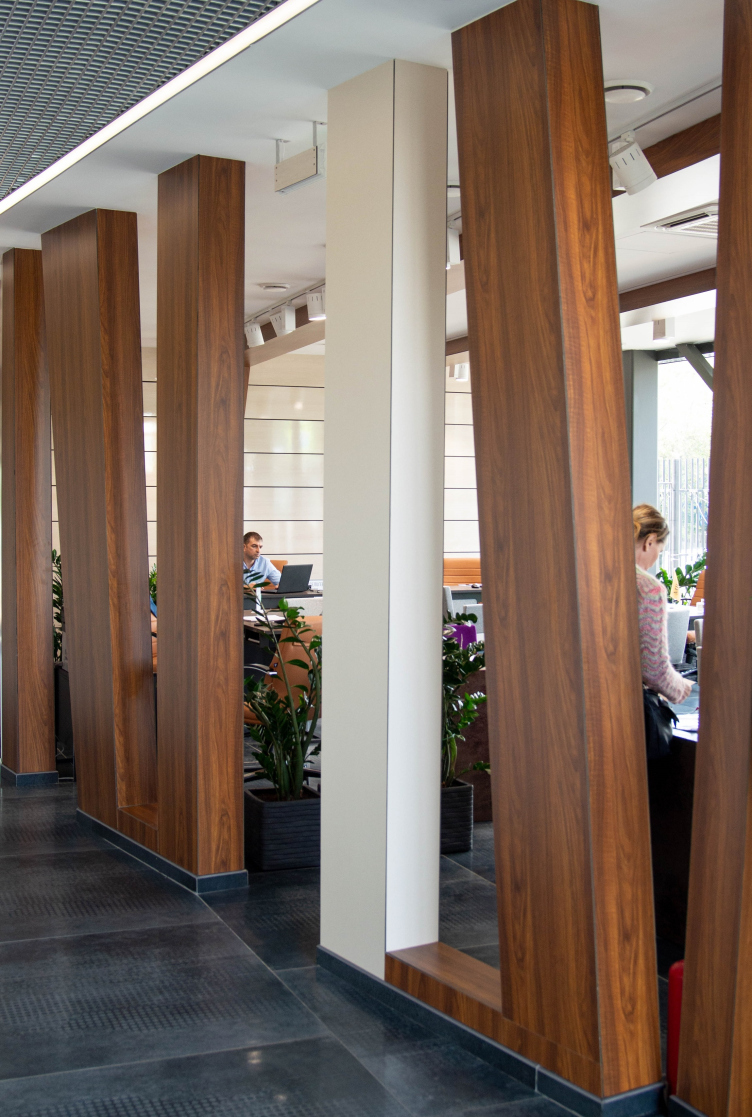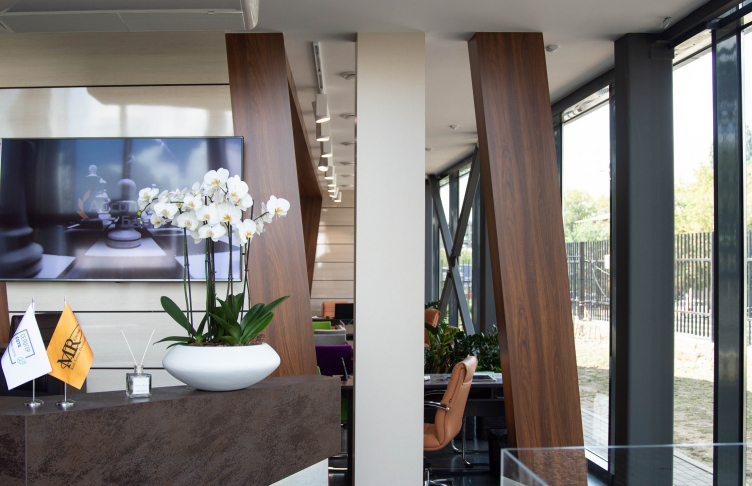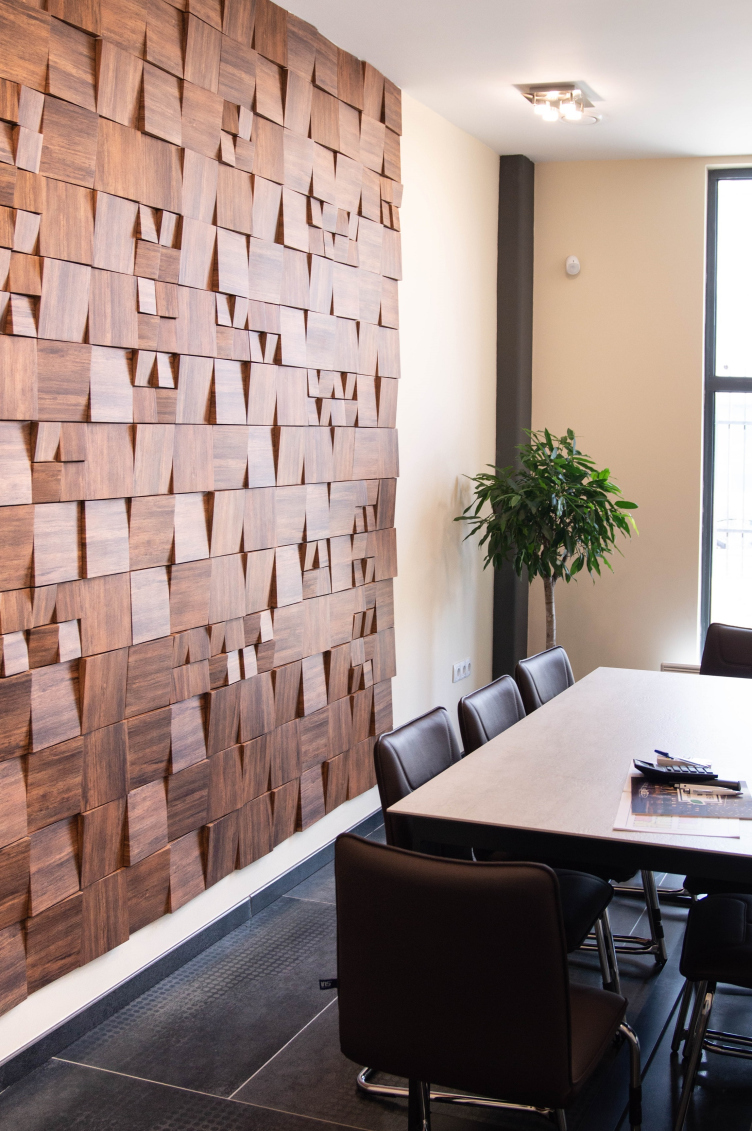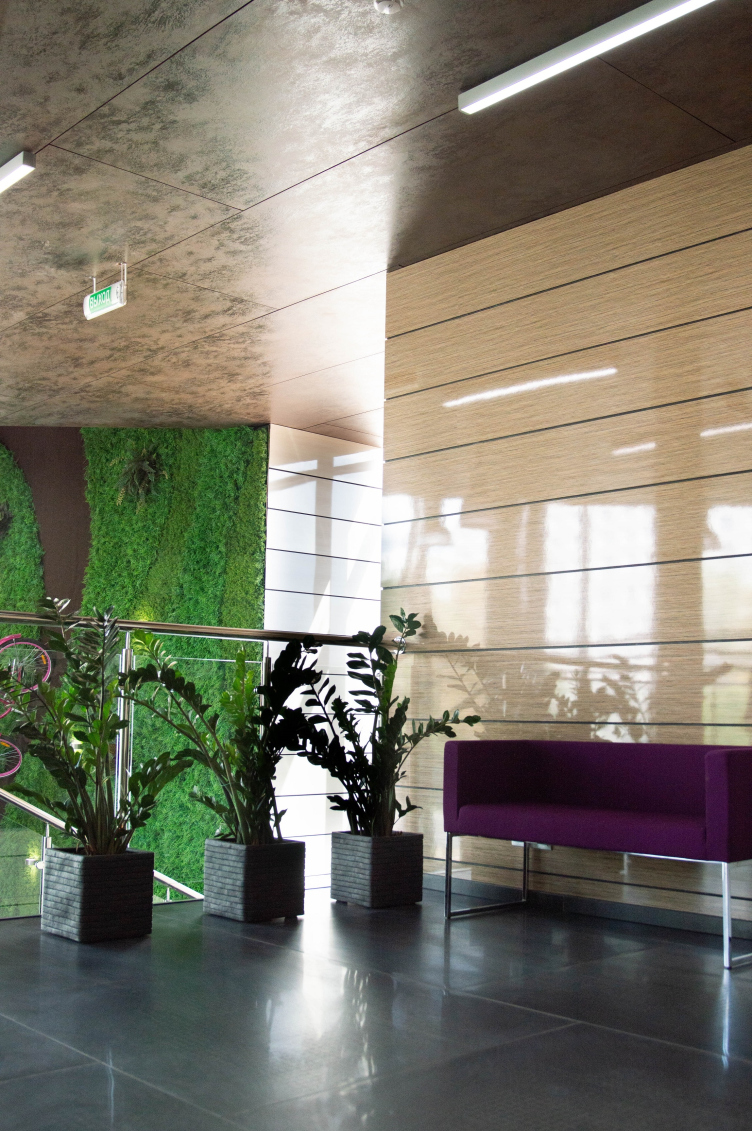The sales office building of "Seliger City" residential complex © Architecturium
The sales office building of "Seliger City" residential complex © Architecturium
The functional and symbolic meaning of the building is clear: the atmosphere must be conducive to sales. The small building is turned in the direction of the main stream of people that moves southward from the Dmitrovskoe Highway to the Seligerskaya metro station down the Pyalovskaya Street. The shape of the portal – a peculiar-looking faceted vortex that draws the potential customers inside – may also remind one that many of the contemporary architects “can trace their roots back to Le Corbusier Capela de Ronchamp”.
The sales office building of "Seliger City" residential complex © Architecturium
The sales office building of "Seliger City" residential complex © Architecturium
The land site allotted for the sales office was not really large, while the rectangular mouth of the portal made it possible to turn the pavilion still more in the direction of the pedestrian stream: the door line lies exactly perpendicular to it. The large stained glass window plays the same role: glowing, especially in the dark, the “aquarium” entices the customer to come in. Through the glass, the passersby can see a model and a video presentation of the future housing complex.
As for the landscaping part, is was designed on a grander scale, with benches, trails, and green plants but currently it has only been partially implemented.
The sales office building of "Seliger City" residential complex © Architecturium
The sales office building of "Seliger City" residential complex © Architecturium
The building consists of two parts, which is reflected in the plan and the coloristic design solution. The entrance area with waiting lounges, a kids’ area, and a reception desk is double-height and maximally transparent. This part Is more representative and complex in its geometry. The office part is more pristine and orthogonal.
The sales office building of "Seliger City" residential complex. Facade A-I © Architecturium
The sales office building of "Seliger City" residential complex. Facade I-A © Architecturium
The sales office building of "Seliger City" residential complex. Facade 5-1 and Facade 1-5 © Architecturium
The sales office building of "Seliger City" residential complex. Plan of the first floor © Architecturium
The sales office building of "Seliger City" residential complex. Plan of the second floor © Architecturium
The decoration of the pavilion is of sandy and earthy colors, which matches the minimalism and the coloristic solution of the residential complex itself. Definitely, the mouth of rusty metal color proposed in the project looks more striking; at the same time, the thin-wall synthetic ceramic granite Archskin, including the nonstandard units of 3x1 meters, initiating more noble materials, allowed the architects to eschew the banality. In particular, the ceiling is also coated with large-size Archskin tiles, which gives it a brutalist look, visually connecting the interior with the façades. The reception desk, just like the outside façade, is resonant with the colors of the future buildings.
The sales office building of "Seliger City" residential complex © Architecturium
The sales office building of "Seliger City" residential complex © Architecturium
The sales office building of "Seliger City" residential complex © Architecturium
The sales office building of "Seliger City" residential complex © Architecturium
The sales office building of "Seliger City" residential complex © Architecturium
The main gem of the housing project is a large green yard with fountains. Originally, they even planned to name the complex “Seliger Park”. Because of that, the interior got a decorative green wall, the design of which is based on the plan of the park, a version of the so-called vertical garden. In this specific instance, the plants are artificial, but still, such little details make a soothing impact on the visitor because we as human beings are semiotic creatures.
The sales office building of "Seliger City" residential complex © Architecturium
The sales office building of "Seliger City" residential complex © Architecturium
Next to the vertical park, the architects designed a kids zone and a parents’ waiting lounge.
The sales office building of "Seliger City" residential complex © Architecturium
The office open space where the mortgage consultants and brokers will work is marked by tilted pillars that are coated with wood-imitating HLP-panels. These “trees” also continue the park theme that was set earlier, as if they had grown through the pavilion. The ecological imagery is also there in the meeting room with a textured wooden wall.
The sales office building of "Seliger City" residential complex © Architecturium
The sales office building of "Seliger City" residential complex © Architecturium
The sales office building of "Seliger City" residential complex © Architecturium
The second floor is a cantilever that overhangs above the first one in the double-height space. Up high, there are management offices and a small recreation area. Also, there are recreational spaces there: a single-room apartment and a fully decorated studio are shown on a 1:1 scale.
The sales office building of "Seliger City" residential complex © Architecturium
After the sales are complete, it is planned that the pavilion will be dismantled, and a fitness center will be built in its stead – this “temporary” status gives some extra charm to the laconic edifice.

